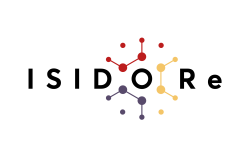Material provided: Report (with recommendations)
Unit definition: 4 person months
Provider country: France (IP); Netherlands (AIGHD)
Short Description: Develop an adapted, locally appropriate plan for community detection of epidemic outbreaks. This service would enable local public health authorities to identify social risks and to facilitate community engagement and participation in the identification of these risks. Where appropriate, this plan will include human interactions with potential animal reservoirs. Rapid quantitative and qualitative methods, including key informant interviews and targeted focus
The Institut Pasteur Anthropology and Ecology of Disease Emergence Unit is a team of social sciences researchers focusing on multiple global health problems. We are anthropologists, historians, sociologists and ecologists working primarily in sub-Saharan Africa. Projects address human-animal and human-environment interactions and emerging diseases. We are particularly concerned with mobilizing our research to contribute to preparedness and response to epidemic outbreaks. The Amsterdam Institute for Global Health and Development is an interdisciplinary joint institute of the University of Amsterdam (UvA) and Vrije University (VU). One of the priority themes is infectious disease elimination. Under this theme, AIGHD explore issues from biomedical, social and economic perspectives, and develop and test novel interventions to address them.
Develop an adapted, locally appropriate plan for early, community detection of outbreaks of epidemic outbreaks. This service would enable local public health authorities to identify social risks and to facilitate community engagement and participation in the identification of these risks through community-based surveillance. This means that scientists work together with community volunteers, community health workers and other stakeholders to bring alerts and signals to authorities and decision makers.
 The ISIDORe project has received funding from the EU Horizon Europe research and innovation programme under grant agreement No. 101046133.
The ISIDORe project has received funding from the EU Horizon Europe research and innovation programme under grant agreement No. 101046133.